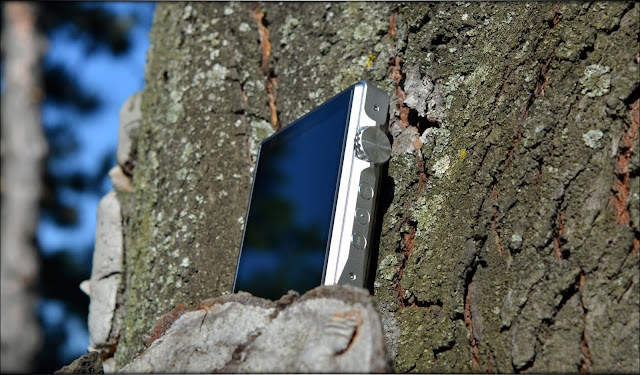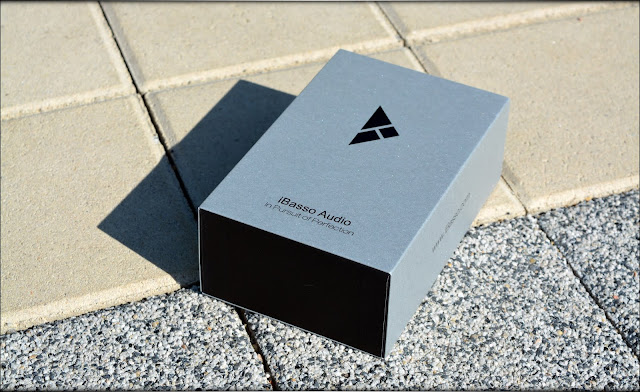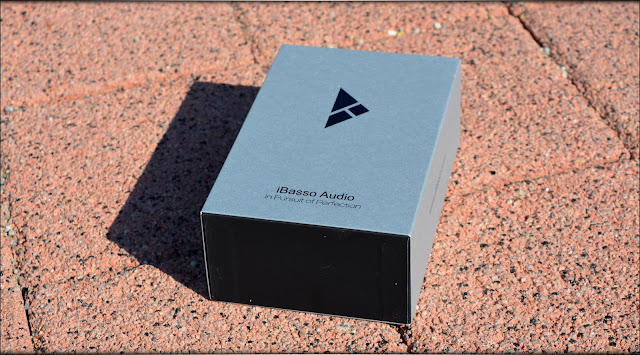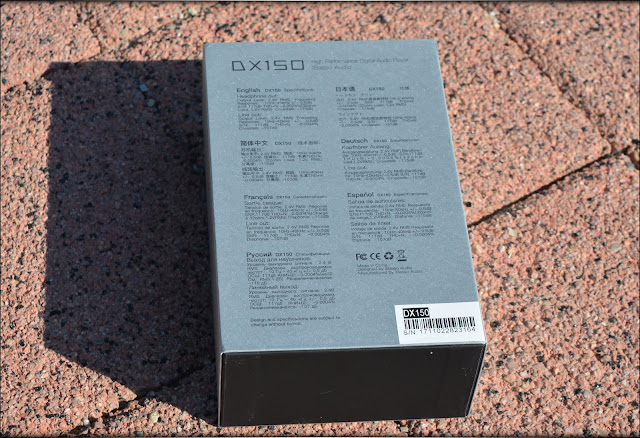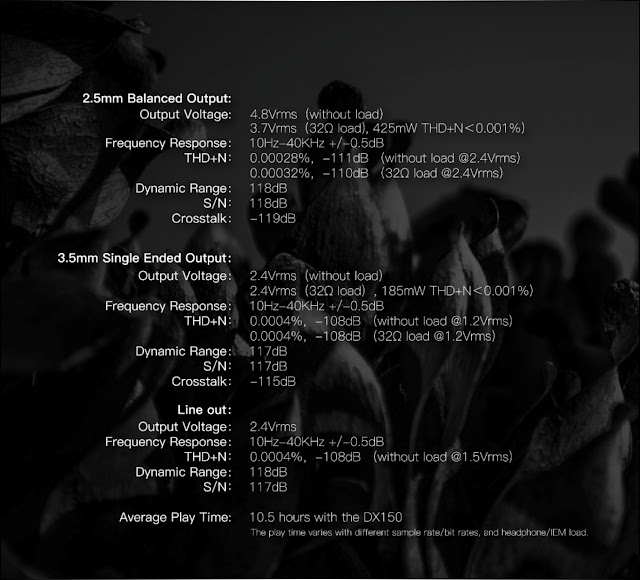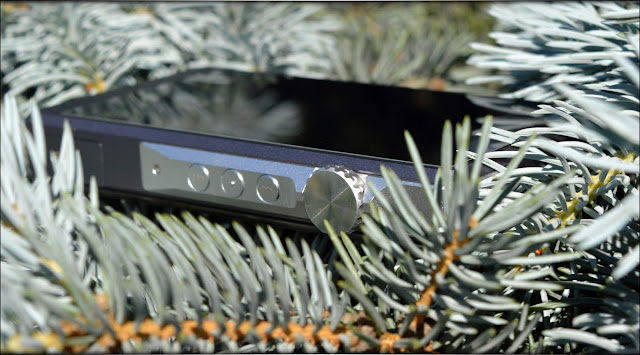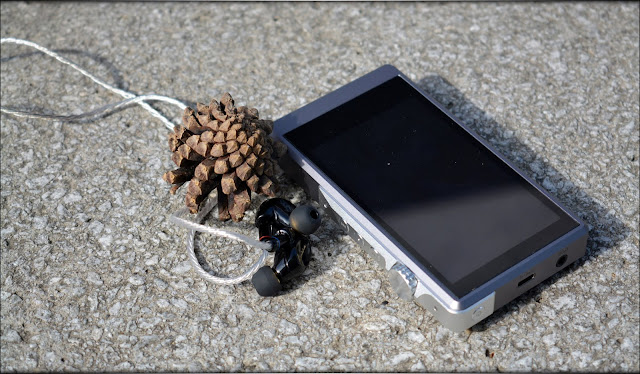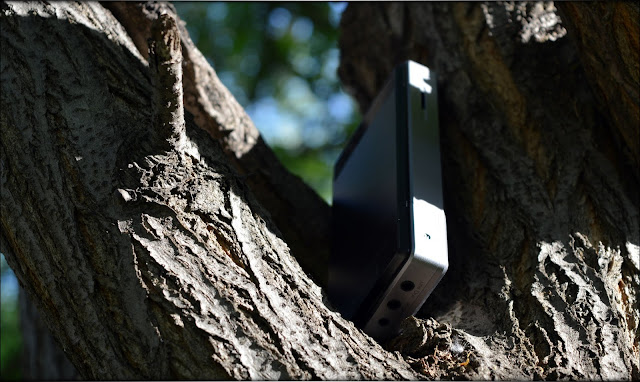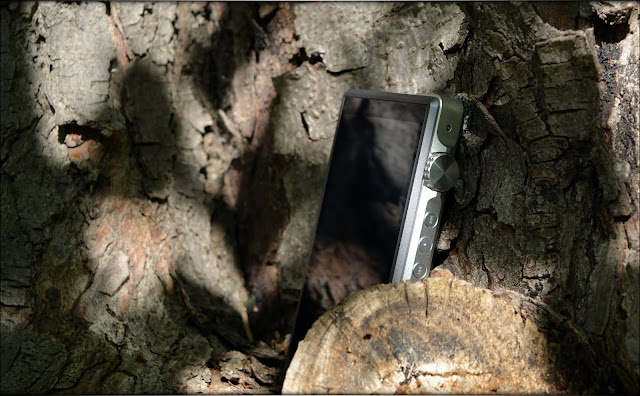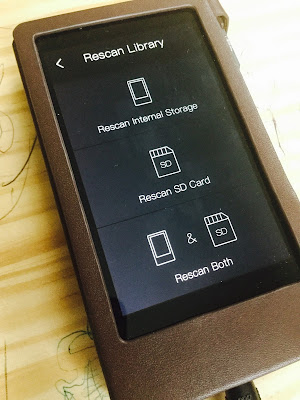The product was provided to me free of charge for the review purpose in exchange for my honest opinion. The review was originally posted on my
blog, and now I would like to share it with my readers on head-fi.
Manufacturer website:
iBasso.
For the reference, my
DX200 review on Head-fi.
Intro.
It’s not the first time I mentioned that before there used to be a clear line between entry level, mid-fi, and summit-fi DAPs, separated by sound performance, supported features, and the price. Today, these lines are blurred where some entry level models have more features than upper tier ones, the sound performance difference is not that drastic, and the price gap varies. You can't stop the flood of new releases, which makes it harder for consumers to narrow down their choices and doesn’t make it easy on reviewers when people ask for recommendations.
But one thing hasn't changed, many audio enthusiasts are still looking for the gear with the best price/performance ratio, and iBasso’s latest DX150 certainly hits the target. Plus, this DAP keeps a lot of the original DX200 functionality and design cues, including a modular amp design, at a fraction of the price. Along with DX150 and its new stock AMP6, my review will also cover their newly released AMP7 and AMP8 (and comparison to AMP6, along with AMP3 and AMP5) since every amp module is fully compatible with DX150 and DX200. So, without further ado, let’s proceed!
 Unboxing and Accessories.
Unboxing and Accessories.
In comparison to DX200 with a more dramatic diagonal-split box, here you will find a more traditional top-cover packaging box, still with a secure foam-fitting cutout, and exterior silver sleeve with a multi-language spec on the back. It’s understandable that you need to distinguish unboxing experience from a premium flagship model, though you still get quite a similar feeling when unboxing either one.



Accessories include a high-quality premium braided-sleeve USB-C charging/data cable, short Coax cable, and Balanced burn-in cable with a load (for a “quiet” burn-in so you don’t have to use your headphones). Also, included was a suede leather case, similar in design to DX200 case, but a little thicker in comparison.


 Stock case.
Stock case.





As a replacement alternative, MITER offers a leather case for DX200/DX150, and to my pleasant surprise it comes without their signature kickstand, keeping it slim while still offering an enhanced grip, scratch protection, and covered imprinted playback control buttons.





 Design and Under the hood.
Design and Under the hood.
From the first look it’s clear that DX150 design was based on their DX200 flagship. It has nearly identical dimensions of 128.5mm x 69mm x 19.5mm, and almost the same weight of 245g (DX200 is 240g). You’ll also find the same layout with a large 4.2” 768x1280 resolution display on the front with a removable amp module underneath on the back. SPDIF digital transport port is still on the top (supporting both coax and optical mini toslink), next to it is USB-C port and a power button in the corner inside of the guard bar that wraps around upper right corner where you have a volume wheel on the side and hw playback Play/Pause/Skip buttons going down. The only difference here is a volume wheel being open while DX200 has a guard bar over it, and the wheel itself having deeper notches for a better grip when turning it with a thumb. Another difference is a display being nearly flush with chassis vs DX200 having a raised display. You will still find a single uSD card on the left side, while ports on the bottom will correspond to a specific AMP module in use.



I know some might not find these “cosmetic” changes to be as significant, especially when DAP is inside the case, but I personally feel that it refines the original DX200 design and gives it a slicker look when out of the case. Also, it gives an easier access to the volume wheel. Of course, all is a matter of a personal preference, and as a matter of fact the limited edition DX200Ti version also implemented a design change where the display is flush with chassis.
Under the hood you will also find many similarities, and a few significant changes. You still have Android 6.0, and the stock sw still requires side-loading apps, though Lurker’s free ROM takes care of that by enabling Google Play and adding some other extra features and optimizations (more details in GUI section of the review). You’re still running on 64bit 8 cores A53 CPU, with 2G LPDDR3 RAM, single uSD, and USB DAC using XMOS XU208 chipset. Still have 802.11 (b/g/n/ac) WiFi, but according to iBasso now supporting both 2.4GHz and 5GHz bands. And still have Bluetooth 4.1, though without aptX support (at least for now). And as it was mentioned already, the same 4.2” Retina display with 768x1280 resolution.


Even 3.8V 4400mAh battery is the same, though battery life was improved due to a different DAC and other optimizations. For example, I can get solid
11hrs of mp3 playback using IT04, connected to BAL HO of
AMP6 in Low Gain with volume set to 65/150. When I switch to
AMP7, using another IEM with a lower sensitivity (Tin T2, 102dB) in Low Gain with a volume set to 92/150, I can get
10hrs of playback. I’m sure going to AMP8 with its balanced output and higher power will reduce it probably by another hour (per my experience with DX200).
So, what are the other changes? Internal storage is down to 32GB from 64GB in DX200, and there is a new system clock architecture, fully synchronized with TXCO and PLL which supposed to make switching between different clock rates more seamless. Also, a big plus, introduction of PD2.0 quick charger which is compatible with QC2.0 standard, meaning faster charging time when you are using QC2.0 compatible chargers. But the biggest change is stepping down from dual ES9028Pro DAC (DX200) to a dual AK4490EQ DAC (DX150). This change is the key behind a difference in sound signature and performance between these DAPs. AK4490EQ is still a very capable DAC, able to support PCM with sampling rate of 8kHz-384kHz (with 8-32bit depth) native, and DSD64/128/256. But it’s not on a flagship level like 9028Pro which can handle up to DSD512, among other differences.
There is no doubt that DX200 is iBasso’s flagship DAP, and DX150 is a scaled down version which can’t sound the same or better. But if you add up all the changes and analyze all the pros/cons, plus consider that it’s still based on a modular design with interchangeable amps, iBasso DX150 is not too far off, meaning they didn’t cut too many corners while actually did cut the price.








 GUI.
GUI.
I usually go into extra details describing the user interface and all the features/settings under the main audio playback app. In case of DX150 which runs on Android 6.0 and uses Mango audio app as its default audio player, it makes no sense to go over everything again since it’s identical to DX200. Thus, please refer to GUI section of my DX200 review. The only additional option in DX150 is Sound Styles in Android Settings menu which I’m going to talk about in Sound Analysis section. But the main difference here is that DX200 comes with Android (Mango app) and Mango native modes, while DX150 has only Android (Mango app) mode. And even that’s not a showstopper since the latest Lurker’s ROM for DX150 adds it.





I already mentioned Lurker’s ROM for iBasso DAPs many times, and there is a good reason why I think it’s a must have upgrade for DX150 and DX200. By default, these Android DAPs don’t come with a Google Play store, meaning to install the apps you need to find corresponding apk files and side-load it manually. Lurker’s ROM, which is FREE, gives you access to Google Play, along with additional optimizations and other goodies.


To find out more about it, visit his page at:
https://github.com/Lurker00 with a direct links to the latest DX150 fw
here and DX200 fw
here. He is usually very good with updates, and his firmware becomes available the same or the next day after iBasso releases their own official update.
But before you start with Lurker’s custom ROM, please visit the official link from iBasso to download their Factory Tool (
http://www.ibasso.com/uploadfiles/download/FactoryTool_v1.39_DX200.zip) which includes in a zip file a very detailed instructions how to install drivers and use batch tool to update the fw manually (instructions for DX200 are the same for DX150). You don’t need this tool to install regular iBasso fw updates, those are usually downloaded, copied, and installed from within DX150/200 DAPs. But to install Lurker’s ROM, you will need this batch tool for a manual ROM flashing. It’s a very simple procedure, and included instructions are easy to follow. Plus, once you install the driver, after that you just run the tool, load image file, and quickly flash the DAP. Once it’s done (get confirmation within a tool), disconnect the DAP, reboot it, and the update starts automatically. Plus, you don’t have to worry about your songs on internal and external storage, they will not be erased. And even if you do need to run Factory reset (recommended after FW updates), you can select option not to erase internal storage media files.
 Sound Analysis.
Sound Analysis.
This is usually the shortest section of my DAP reviews since Pair Up and Comparison sections are where you will find more details to get a better feel for the sound of a DAP in a relative comparison. The sound analysis of a DAP is based on the description of how you hear it through various headphones, so you are describing the sound of the synergy between headphones and the source.
I went through many IEMs and full-size headphones to find a common sound-performance denominator. In a summary, I hear DX150 w/stock AMP6 to have a neutral sound signature with a warmish natural analog tonality. That natural tonality with good retrieval of details especially shines through in mids when listening to vocals. Another thing that stood out was an excellent low-end punch. The soundstage expands wide and it scales up going from 3.5mm SE to 2.5mm BAL outputs (AMP6). Furthermore, I find DX150 to have a very good expansion of dynamics as well as layering and separation of the sounds which also scales up going to AMP7 and AMP8.
Based on the stock AMP6, when going from 3.5mm to 2.5mm ports, balanced output has noticeably more power (better efficiency with 12 less volume clicks), a little wider soundstage, and a slight improvement in dynamic range, while the tonality is nearly the same.
Also, DX150 offers a Sound Style mode available in Settings menu under Sound & Notification, where you have a choice between
Standard and
Full Sound modes. After going back'n'forth, I found Full mode to have a slightly wider soundstage and a little tighter sound. The effect is subtle and does vary between different headphones, depending on their sound signature and technical performance.


Furthermore, based on Digital filters of AKM DACs, while analyzing the sound with Sharp Roll-off I hear a faster attack and more sparkle, with Slow Roll-off I hear the attack to be a little slower while sparkle is the same, and when switching to Super Slow Roll off I hear the slower attack and less air/sparkle in comparison to other filters. The other two filters were Short Delay with either Slow or Sharp roll-off which I hear the same as corresponding filters with and without short delay.

DX150 with AMP6, AMP7, and AMP8 amp modules.
Intro.
Having a modular design is both a blessing and a curse. Amplifier section of the DAP is one of the critical parts of the path to a headphone output which can either make it or break it the final sound. It can also change the tonality and the sound characteristics, as well as give you access to a balanced output, boost the power, or lower the noise floor while improving SNR. In a traditional DAP you are stuck with a built-in amp section and specific output ports, and if you want to change it, you must use LO to patch in external amp or digital out to connect to external dac/amp. Modular design is an elegant solution to replace the amp section while keeping the same DAP footprint, without a need for an external stack.
So, you can consider that as a blessing, especially since in case of DX150/200 you can upgrade the sound and performance for $200 per module. A curse is when you have more than a few choices and end up splitting hairs, trying to figure out which one to get. I already covered AMP3/4/5 in my separate review
here. Now with introduction of AMP7 and AMP8, you have more choices in addition to stock AMP1 (DX200) and stock AMP6 (DX150). With AMP2, AMP4, and AMP4s no longer available, you are down to AMP3, AMP5, AMP7, and AMP8 as your optional amps to consider for upgrade. It’s still a lot of choices, but you need to consider your headphone termination, 3.5mm SE, 2.5mm BAL, or 4.4mm BAL, and if you do or don’t require LO, because some of these amps have big internal caps and not enough room for LO port.
AMP design/spec.
Just as a preface, AMP7 and AMP8 are the latest offerings from iBasso and they implement a new discrete circuit design with both high voltage and high current output. Both amps offer +/-8V high voltage swing which should improve the dynamics of output, and high output current of up to 2700mA to benefit low impedance multi BA/hybrid IEMs. This is an impressive spec, and to achieve this high voltage and current while still maintaining low output impedance, iBasso had to use discrete components, typical of desktop amp design.
As a quick summary of each available amp card:
AMP7 discrete single ended amplifier card
- 3.5mm SE: 3.2Vrms, S/N 122dB, output impedance 0.3ohm
- 3.5mm SE HO and LO
AMP8 discrete balanced amplifier card with Pentaconn 4.4mm port
- 4.4mm BAL: 6.2Vrms, S/N 125dB, output impedance 0.38ohm
- 4.4mm BAL HO only
AMP3 high voltage swing balanced amp card
- 2.5mm BAL: 6Vrms, S/N 124dB
- 2.5mm BAL HO and LO
AMP5 high voltage swing single ended amp card
- 3.5mm SE: 3.2Vrms, S/N 121dB
- 3.5mm SE HO and LO
AMP6 (stock DX150 amp)
- 2.5mm BAL: 4.8Vrms, S/N 118dB
- 3.5mm SE: 2.4Vrms, S/N 117dB
- 3.5mm SE HO and LO, 2.5mm BAL HO
AMP1 (stock DX200 amp)
- 2.5mm BAL: 6Vrms, S/N 125dB
- 3.5mm SE: 3Vrms, S/N 122dB
- 3.5mm SE HO and LO, 2.5mm BAL HO
AMP comparison.
Since this is DX150 review, the following comparison will focus on sound changes I hear going from a stock AMP6 to other amp modules. I also included a comparison between AMP7 and AMP8, since I received a lot of questions about it. All my sound impressions were collected using iBasso IT04, 64 Audio U18t, and Beyerdynamic T5p 2nd gen headphones. Due to a difference in output power, I tried to volume match as close as possible in every comparison. Also, please keeping in mind this is how I hear the difference, so it's my subjective opinion.
AMP6 -> AMP7: the same volume level between SE outputs, wider soundstage (SE of 7 is even a touch wider than BAL of 6), blacker background, a little more transparency and slightly better layering in 7, and 7 is a touch brighter and a little more revealing in comp to 6.
AMP6 -> AMP8: the same volume level between BAL outputs, wider soundstage, more transparency, tighter bass with a bigger impact, a little more treble sparkle, improvement in layering and dynamics, blacker background, the sound has a little more body and more revealing in comparison.
AMP7 -> AMP8: 8 has more power, needs less volume (SE vs BAL outputs), 8 has a little wider soundstage, bass has a little more impact, tonality is very similar but overall sound of 8 is tighter, has blacker background and improved dynamics.
AMP6 -> AMP3: very similar performance and tonality, perhaps 3 having slightly better dynamic range expansion. Actually, with 3 having a lot better S/N spec, I expected a bigger difference but 6 performed very close.
AMP6 -> AMP5: again, despite a difference in S/N spec, the performance is not too far off, especially when comparing 5 to 6 SE, though 5 has a fuller body with a little warmer tonality. The difference is more obvious when comparing 5 to 6 BAL which is a little brighter in comparison to 5 SE.
Bonus comparison.
DX200: AMP4 vs AMP8 - soundstage is nearly identical. Also, mids and treble are very similar, the noticeable difference is in low-end where amp8 bass has a little stronger punch with a deeper extension, giving the sound a little more body, while in overall comparison amp4 has a little better layering of the sounds.

Comparison.
In this comparison section I was using IT04, U18t, and T5p2 during listening and comparison between different sources, all volume matched for a consistency.
DX200 w/amp8 vs DX150 w/amp8: 200 has a blacker background, more transparency (less coloring), better layering and separation of the sound. In comparison, 150 sounds a little smoother and a bit warmer (not as transparent) and with some reduction in dynamics. Soundstage is very close. In terms of design, these have a lot of similarities, from the same display, presence of volume wheel, the same ports (between stock amps), similar storage (internal 32GB vs 64GB) with both supporting a single uSD, same RAM and battery capacity, interchangeable amp modules, Android OS, etc. While DX150 doesn't have native Mango, when you install the latest Lurker's ROM you get that enabled as well. The main difference is in DACs which explains the edge in DX200 sound performance. But then, DX150 has quick charge and costs almost $400 less. If you want to squeeze every ounce of performance and get the best, DX200 over DX150 is a logical choice. But if you are on a budget and want the taste of DX200, DX150 definitely worth your consideration.
DX150 vs Hiby R6 - very similar soundstage expansion when comparing balanced HO; in terms of tonality R6 is brighter and a little leaner while DX has a fuller body and a little warmer and smoother (more analog) tonality with a little harder hitting bass. Both have a very similar technical sound performance. In terms of the spec, both have 32GB internal storage with uSD expansion, 3.5mm/2.5mm outputs, touchscreen and android interface. DX has volume wheel vs R6 with +/- buttons, and I know some might have preference for a physical wheel. R6 comes pre-installed with Google Play, out of the box DX150 needs to be side-loaded with apps, unless you install free Lurker's ROM which adds Google Play (which I recommend). In terms of Android/app performance, R6 with a faster processor and 3GB of RAM has an edge, as expected. With audio performance, R6 has high output impedance and in many cases with IEMs requires iEMatch. Also need to keep in mind DX advantage of interchangeable amp modules. I have been asked about this comparison a lot, and I suggest to figure out your DAP feature priorities and make a list of pros/cons since these have a similar technical performance with a difference in tonality which going to affect pair-up of headphones with different signatures. Plus, keep in mind if you either want a fast smartphone-like Android performance (R6) or the flexibility of replaceable amp modules to enhance audio performance (DX150).
DX150 vs Cayin N5ii - both have a similar soundstage expansion; they also have a similar neutral-warmish fuller body tonality, but N5ii has crisper treble while DX treble extension is a little smoother in comparison, as I would expect due to ESS vs AKM DACs. I also enjoyed how both pair up well with many headphones and result in nice hard hitting low end response. In comparison, both have a volume wheel, hw playback buttons, 3.5mm/2.5mm HO, touch screen interface (though DX150 is more responsive), both have internal 32GB of storage, while N5ii has dual uSD vs DX with a single one. While N5ii has Google Play already pre-loaded, its Android experience is rather limited in comparison to DX with its open Android 6.0, but remember that DX needs Lurker's firmware for Google Play or to side-load each app. Due to 2GB of RAM (DX) vs 1GB (N5ii), Android experience with interface and apps is faster on DX. And of course, DX interchangeable amps set it apart.
DX150 vs FiiO X5iii/X7ii - lots of differences here with X5iii. DX soundstage is wider, tonality is a little more neutral, background is a lot quieter in comparison to a strong hiss level of X5iii with its warmer tonality. Also, DX sound is more dynamic, with a better separation and layering. Both have volume wheel and external hardware playback controls, touch screen interface, 32GB internal storage, single uSD for DX and dual for X5iii, and of course big advantage of interchangeable amp module for DX. While X5iii comes pre-loaded with Google play and DX by default needs to be side-loaded, installing Lurker's fw evens out the field and Android performance and screen response is faster in DX with 2GB of RAM vs 1GB in X5iii. I know some will ask about X7ii comparison since it's a modular flagship version of FiiO DAPs, and in terms of a performance X7ii has more similarities with DX150 except for tonality where X7ii is more neutral while DX150 has a more natural warmer tonality with a punchier bass impact. In terms of the design, once you install Lurker's ROM, they are on par with a similar Android experience and full access to Google Play, though X7ii has 64GB of internal storage and dual uSD. Despite X7ii modular design with replaceable amp modules, I still find iBasso amps design to offer higher level of performance.
DX150 vs Cowon Plenue R - DX soundstage is a little bit wider, while both have a very similar signature and tonality, and overall a very similar technical performance. In terms of design, both have 3.5mm/2.5mm, touch screen interface, volume wheel in DX vs volume buttons in PR, both have single uSD, while internal storage is 32GB in DX and 128GB in PR. Both have a very responsive touch interface, but PR doesn't have Android OS and no access to apps, while DX can run any app and has interchangeable amp modules. The main advantage of PR is JetEffect dsp effects and more compact size, that's about it.
DX150 vs theBit Opus#3 - DX soundstage is a little wider; the tonality of #3 is a little brighter and leaner in comparison to a fuller body and a little warmer, smoother, and more analog tonality of DX. Both have 3.5mm/2.5mm, touch screen interface, volume wheel, single uSD expansion, with 32GB internal storage in DX and 64GB internal storage in #3. The big difference here is of course replaceable amp modules of DX150 as well as open Android OS, while Opus#3 can only be side-loaded with apps though painful steps due to a closed Android OS.
 Pair up.
Pair up.
In this pair up testing I was using DX150 with a stock AMP6, and short delay sharp roll off filter setting. I also included comments about my personal pair up preference, referring to various amp modules. Furthermore, I noted High gain (HG) or Low gain (LG), Volume (v) level, and either SE or BAL outputs, depending on the cable termination. As my usual disclaimer, this is how I hear it, so take it as a subjective opinion.
iBasso IT01 (DD), LG, v76, SE - wide soundstage, v-shaped fun signature, bass hits hard (both sub-bass rumble and mids-bass punch), lower mids are lean while upper mids are detailed and natural; treble is very crisp and airy. Stock AMP6 was my favorite pair up since AMP7 pushed mids a little back and AMP8 made bass stronger. Obviously, a matter of a personal sound preference.
iBasso IT04 (3BA+DD hybrid), LG, v68, BAL - wide soundstage expansion, very balanced transparent sound, deep sub-bass rumble (with more rumble in comparison to some other pair ups), fast mid-bass punch, lean lower mids, natural revealing upper mids, very detailed vocals, and crisp airy treble with a good control. AMP7 wasn't too different but AMP8 did scale it up to a next level without boosting the bass too much, just adding a little more body to the sound, giving it a little more analog flavor, improving layering, resolution, retrieval of details, and making the sound a little more holographic. While I enjoyed AMP6 pair up, AMP8 pair up with IT04 is really good. If you think about it, for $1.2k (DX150+AMP8+IT04) you can have all-in-one hi-res solution for the price which is less then some flagship IEMs.
Beyerdynamic T5p 2nd gen (full size Tesla), HG, v80, BAL - very balanced natural smooth tonality, wide soundstage, nice rumble and good mid-bass impact, smooth natural mids, nice treble sparkle. The sound has more body and not as lean and bright like in some other pair ups. I tried these in both low and high gain, and found high gain to improve mids tonality, making it a little more natural. Also, I prefer AMP7 in this pair up, giving sound a little more transparency.
Audeze EL8C (Planar magnetic), HG, v108, SE - neutral revealing tonality, wide soundstage, bass goes deep but quantity is neutral, mids are neutral and revealing as well, a little intimate, treble is crisp and detailed and without metallic sheen. The sound is lacking some body. Here, since I only have stock SE cable, I can't try it with AMP8, but AMP5 is a little better match, giving more body to the sound.
VE ZEN 2 Omega (320ohm earbuds), HG, v90, BAL - wide soundstage expansion, very smooth natural organic tonality, deep analog rounded bass with a nice sub-bass rumble, fuller body natural detailed mids, well defined controlled treble. While pair up with a stock AMP6 is pretty good, I liked AMP8 pair up a little better since it made sound more transparent, faster, tighter. The beauty of Omega version of Zen is replaceable cables where now I can switch to balanced and try different sources with different cables.
64 Audio U18t (18BA, 9ohm impedance), HG (v56), LG (v70), BAL - was going back'n'forth between high and low gain setting, the sound is very balanced, expanded, detailed, very nicely layered under both gains, but dynamic expansion is better in high gain, though due to low impedance in HG there is a touch more hissing in comparison to low gain. In LG the sound is a little smoother. The pair up of U18t is great with stock AMP6, as well as AMP7 and AMP8.
UM Mason V3 (16BA, lower sensitivity), LG, v77, BAL - wide soundstage expansion, very neutral revealing tonality, good low-end extension with a moderate impact, lean transparent mids, great retrieval of details, crisp airy treble. If you want more body, AMP8 does scale up the performance here, probably my favorite pair up, especially since it adds more punch in low end.
UE UERR (3BA), LG, v78, BAL - surprisingly a very wide soundstage, a nicely balanced neutral natural tonality, great sub-bass rumble, punchy mid-bass, neutral natural detailed mids, crisp airy well controlled treble. While it can scale up with some other amps, I liked this pair up the most because sound remained very balanced across entire FR, and the tonality was very natural and still detailed. AMP7 was my 2nd favorite pair up after stock AMP6 with UERR.
Westone W80 (8BA, 5ohm impedance), HG, v61, SE - tried between low and high gain, and there is no comparison, high gain brings more details to the mids, with a sound being faster and punchier, while low gain makes mids a little veiled. In high gain, the sound has a very balanced signature with a natural organic tonality. Great sub-bass rumble and a strong mid-bass punch, fuller body natural detailed mids, well controlled detailed treble. AMP7 expanded the staging making it more holographic and made sound a little bit smoother.
Campfire Audio Andromeda (5BA, higher sensitivity, lower impedance), LG, v52, BAL - high gain is no-go here due to hissing, low gain has hissing as well, but attenuated. Soundstage is nicely expanded, very wide. Bass goes deep and has a strong impact, mids have fuller body, sounds more natural, slightly pushed back, treble is very crisp and airy. I tried AMP8, but hissing was too strong, as well as bass hitting a bit too hard. AMP7 pair was excellent, lifting some veil off.
 External wired/wireless connections.
External wired/wireless connections.
Both DX150 and DX200 now feature Bluetooth DAC/amp option which allows iBasso DAPs to be paired with your smartphone or a tablet to transmit audio wireless. Due to bandwidth limitation, I’m sure not all hi-res lossless files will be supported, but I still need to test everything. In theory, people play their high res DSDs from internal storage anyway, and this feature is more convenient when you are away from WiFi and can use your phone as a hotspot for audio streaming to your DAP used as an external DAC/amp. Or if you just want a wireless DAC/amp setup. And of course, if you want to improve the sound of your smartphone and save its battery during audio playback, this is also a great option. Pair up was easy, just need to enable the toggle under BT setting of DX150 and let your smartphone search to pair up with a DAP. Don’t pair up with your phone from DX150, only pair up with DX150 from your phone in order for this to work.



You can also use Bluetooth connection from within DAP to pair up with wireless headphones. I tested it with Sennheiser Momentum 2 Wireless, and M2W pair up was fast, yielded clean detailed sound, not exactly on par with my Galaxy S9 aptX connection, but close enough considering DX150 doesn’t support aptX. The only concern here, the same pair of M2W and DX200 was operating 55-60ft across the open space, while M2W and DX150 range was down to 30-35ft.


USB DAC function is supported, and just like with DX200, I wanted to verify it and aware from others that it's working without a problem. But unfortunately, my aging Windows laptops at home have issues with Thesycon USB drivers due to security signature setting. So, I didn’t get a chance to test it.
You can use DX150 as a digital transport to drive external DAC/amp from SPDIF output, using either coax or optical (mini toslink) connection. I verified it with iFi Micro iDSD BL, using provided short 3.5mm/coax cable as well as my short mini-toslink optical cable. In this pair up, I hear a more neutral detailed sound, typical of Micro iDSD signature. You can use both DX150 volume control and micro iDSD volume control. Switching to optical, also works great but the first time the fit was tight and I had to apply a bit of force to get the plug in. Using optical connection, I hear the sound to be a little cleaner and more transparent in comparison to coax cable.

Not sure if this is officially supported, but I was also able to use DX150 USB Digital Out as a transport to drive HA-2 portable dac/amp. I did get it to work with DX150 and Oppo HA-2 using Shanling L2 usb-c to micro-usb cable, but the sound was on a brighter side, and I wasn't too crazy about this pair up. Not sure if this is going to be a matter of trial'n'error with other external DAC/amps since I couldn't get it to work with Micro iDSD.

Depending on amp module, if it does or doesn’t have LO, you can connect external amplifier to DX150 Line Out, bypassing its internal amp section. For this test I used a neutral E12A to compare DX150 HO vs DX150 LO + E12A. From this testing, I can hear E12A and AMP6 to have nearly the same neutral tonality and a nice dynamics expansion. This means that DAC output is a bigger contributor to a neutral-warm tonality which is typical of AK4490 - the signature of DX150 DAP with its stock AMP6.
 Conclusion.
Conclusion.
It's very easy to get confused when looking at and comparing DX150 and DX200 DAPs, considering there is a lot of overlap. Especially when you look at the exterior design, modular amp support, flush mounted screen, and updated volume wheel area, some might even think by mistake that DX150 is an upgraded version. But you have to be realistic. No company in their right mind will release a cheaper model and make it superior in performance to kill the sales of their flagship. So the fact still remains, DX200 is iBasso's current flagship, utilizing a higher end premium DACs with improved sound performance in comparison to DX150.
But at the same time, DX150 is not too far off and with some of the amp modules the gap is even closer. That's what gives this latest iBasso release a very impressive price/performance ratio. Its neutral sound tuning with a warmish tilt will pair up great with many headphones, giving them a more natural tonality, its selection of different amps (shared with DX200) will allow you to upgrade the sound while still keeping the same DAP chassis without a bulky exterior stack up, and its WiFi and Android OS will let you run any app on DX150, either side-loaded or with full access to Google Play if you install Lurker's fw. iBasso has been pushing the envelope of price/performance ratio with many of its latest releases, and now after DX200 and DX150, it will be interesting to see what the upcoming DX120 brings to the table.


